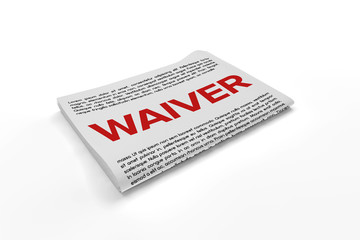Tips for Protecting Your Business From a Slip-and-Fall This Winter

Canadian winters have a reputation for being harsh and unpredictable. No matter what province you call home, frigid temperatures and heavy snowfall can wreak havoc on a commercial property. Even moderate temperature drops and mild flurries can create the perfect storm for a slip and fall. In fact, Statistics Canada documents around 1.7 million slip and fall accidents every year. That’s why we’ve put together this prep guide to help protect your business from slip-and-falls this winter.
Where do winter weather hazards exist?
During winter in Nova Scotia, ice and snow will usually accumulate on sidewalks, stairways, parking lots, wheelchair ramps, and building entrances. Additionally, icicles and frozen or heavy snow can gather above entryways and cause serious injury if they fall on those below. Snowfall may also conceal walking hazards that would otherwise be visible during good weather, such as potholes, parking blocks, curbs, and speed bumps. Another hazard that often gets overlooked is lighting. Colder weather means shorter daylight hours. Exterior lighting of the building, walkways, and parking lot should be properly maintained to accommodate extended hours of darkness.
Who is responsible for a slip and fall?
Determining liability for slip and fall cases on snow or ice can often be difficult and complex. Under the Nova Scotia Occupiers Liability Act, the person with control over the property (the “occupier”) must take reasonable steps to maintain a safe environment. In other words, the standard for snow removal and maintenance is a reasonable and adequate system of procedures in place. What is considered as reasonable steps to address hazards will depend on the type of property, the individuals who enter the premises, and the weather conditions.
In the recent case of Flowers v Allterrain Contracting Inc., the Plaintiff slipped and fell on ice when exiting a Walmart store in Halifax on an evening following a major snowstorm. The Plaintiff claimed that she did not see any salt spread on the ice in the area of the walkway where she fell. The owner of the property and snow removal company (the Defendants) provided logbooks that showed all entrances were pre-salted before the snowstorm, and snow removal work was completed on the property by employees and the third-party company. The Supreme Court of Nova Scotia ruled that the Defendants met the test for a reasonable and adequate system as required by law for a snow removal process.
In some cases, what is considered to be a reasonable and adequate system may not be enough to keep a property safe. For example, an abnormally frequent number of storms may cause delays for snow removal services in certain areas. Courts will take these exceptional circumstances into consideration when determining liability for a slip and fall accident in the winter. Still, whether it is the owner or a third-party company performing snow removal, there is a duty of care to anticipate the dangers of snow and ice and to maintain the property accordingly.
How to Avoid Winter Slip-and-Falls
The winter months bring more than just cold weather; they bring a slew of storms that often result in snow and ice-covered landscapes. While it may be a winter wonderland for some, as a business or property owner, a build-up of snow and ice creates a hazard with the potential for costly liability. Here are some tips to help protect your business from slip and fall accidents this winter.
Use Ice Melt or Salt Immediately
Use ice melt or salt early and often once the temperature starts to dip below freezing, paying special attention to sidewalks, steps, ramps and areas around steps. Push spreaders are ideal for distributing uniform coverage. These products melt ice quickly and help prevent refreezing without damaging your property. Ice melt will also soften the built-up ice on a Monday morning after a long weekend of snow.
Another option would be to use a liquid brine pre-treatment, which is a mixture of rock salt (sodium chloride) and magnesium chloride dissolved in water. Applying liquid brine to parking lots and walkways can help prevent ice from bonding to the pavement. It also minimizes post-storm cleanup and the potential for melted ice to refreeze.
At a temperature of -1°C, one pound of salt will melt approximately 46 pounds of ice. However, as the temperature drops, the effectiveness of salt will decrease. When temperatures reach -12°C and below, salt will stop working. Ice melts and brine solutions containing calcium chloride or magnesium chloride will melt ice down to lower temperatures around -30°C.
Create a Clear Documentation Process
As a business or property owner, it’s your responsibility to remove snow and ice from your property. It’s essential to establish a clear process for snow removal and slip and falls that your crew is fully trained on and expected to follow. Knowing which areas need to be maintained and who is in charge of snow removal and maintenance will reduce confusion and ensure the entire property is properly managed.
Determine which entrances should be cleared first, how often snow removal should occur, what type of ice melt solution should be used, and who is responsible for what. Review the areas where snow should be piled (typically in a low area of the lot) to prevent melted snow from pooling and refreezing. Maintenance logs should include the estimated amount of snowfall, ice build-up, temperature, date and times, action taken (e.g., called contractor, used plow/shovel, applied salt/ice melt), the individual’s name overseeing removal and maintenance, as well as notes for inspection and unusual conditions. Check with your insurance provider to see if they have an existing snow removal or maintenance log template.
Hire a Snow Removal Service
Based on the size of your property and the average snowfall in your area, it may be beneficial to hire a third-party service to remove snow and ice. There are a lot of options for commercial snow removal. It’s important to compare sub-contractors to choose a qualified service provider with an action plan and materials that meet the needs and budget of your property. Some companies might offer services in addition to snow removal, like plowing, pro-active salting, ice management, and 24-hour weather monitoring.
Review the contract
Make sure you have a written contract/service agreement that clearly defines the limitations of liability and services performed. Also, specify what products will be used, under what conditions, and in which areas. Priority areas, like parking lots, walkways, driveways, stairs, entrances, emergency exits, loading docks, and drains, should be cleared regularly. Snow and ice should also be removed from the roof when it reaches over 20 centimetres (8 inches).
Prepare to handle light snowfall yourself. Some companies are not required to show up until there are at least five centimetres of snow. If there is less snow in the forecast, businesses remain responsible for clearing their own premises. On the flip side, many businesses are surprised when snow removal companies don’t show up following some late-season winter storms. Most contracts specify a maximum volume of snow that can be cleared in a season without additional payments.
Check insurance
Make sure the snow removal service you hire carries the proper insurance, covering both its operations and its employees. The last thing you want is to be liable for a worker’s injury. Get a certificate of insurance from the contractor, and have your broker review the coverages to confirm their liability insurance is in order. It’s also a good idea to have a commercial slip and fall lawyer review the terms of limited liability before signing the contract.
It should be noted that hiring a removal service does not absolve you of liability. Generally, liability for a slip and fall on snow or ice will depend on when and where the accident happened. When a claim is filed, all parties are typically included in the lawsuit (the occupier and the snow contractor). If any subcontractors are involved, they are often included in the suit as well.
Establish accountability
Develop an accountability plan with the vendor to make sure they’re holding up their end of the bargain. Request a checklist from the snow removal company that outlines the most important aspects of the services provided. If a vendor is not fulfilling its contract, it’s recommended to contact the company by phone and email. The phone call is for initial contact, and the email establishes written communication with a time stamp.
To find a snow removal service you can count on, you need to start your search early. It takes time to set up a snow maintenance plan, and most companies fill their schedules in the summer or early fall. If you wait until the first snow hits, your chances of securing a reliable company are slim.
In some cases, hiring a snow removal service isn’t an option. If employees are responsible for taking care of snow and ice, they need to be trained and provided with proper removal and safety equipment. Keep salt and ice melt products topped up, and put shovels and mops in a readily accessible area. Employees should also wear a high-visibility jacket when outside, as well as a hat and glove set, in addition to proper footwear.
Display Warning Signs
Ice melt products and incoming visitors and employees can cause entryways to become wet. Moveable signs and cones can help warn people about slippery floors to slow people down as they enter the building. You may need to increase the frequency of cleaning or add absorbent mats in high-traffic areas. Keep extra mats on hand in case they become saturated with water and need to be changed. For persistent issues, consider upgrading to slip-resistant flooring.
Install Security Cameras
If you don’t already have security cameras outside (or inside) your workplace, consider purchasing them to monitor the premises. A surveillance system can highlight potential hazards, so you can fix the problem before someone gets injured. If an accident does happen, video footage can provide a record of the injury to help resolve claims and reduce the likelihood of false claims.
Place cameras in strategic locations to cover the entire property, so you can clearly identify involved parties and what occurred during an incident. Your system should be programmed to store footage for at least 60 days. However, it’s recommended to keep a database of footage for two years as this is how long people have to file a slip and fall claim.
What to do if a slip and fall happens
If a visitor or staff member reports a slip and fall incident on your property, seek medical attention immediately. The next step is to document the incident. An Accident Report Form should be filled out by the claimant and any available witnesses. Ideally, the report should include:
- The date and time of the accident
- Details of what happened and where
- Notes on weather conditions
- A statement and contact information from the injured party and the person who administered care
It’s also a good idea to include photos with the report. Take pictures of the fall location, the conditions at the accident scene, and the footwear the injured person is wearing. These reports should be kept on file for a minimum of two years.
To help manage slip and fall claims, it’s important to notify your insurance company as soon as possible. If the incident involved a staff member, you need to contact your workers’ compensation insurance provider and follow their prescribed protocol.
Make sure you’re covered
General liability insurance can protect your business from injury claims. This type of policy can cover legal fees associated with slip and fall claims, in addition to covering medical expenses for the injured party.
For a slip and fall claim to be successful, the person making a claim (the Claimant or Plaintiff) must prove damages (e.g., medical care expenses, pain and suffering, and loss of income), that the Defendant (the occupier) owed a duty of care to the claimant, and that the duty owed was breached through negligence on the part of the Defendant.
Don’t slip up this winter
The best way to prepare for winter is to plan ahead. Don’t wait until a major storm hits to iron out the details of snow removal. Creating a clear process in advance can help avoid unnecessary accidents and costly claims.






















